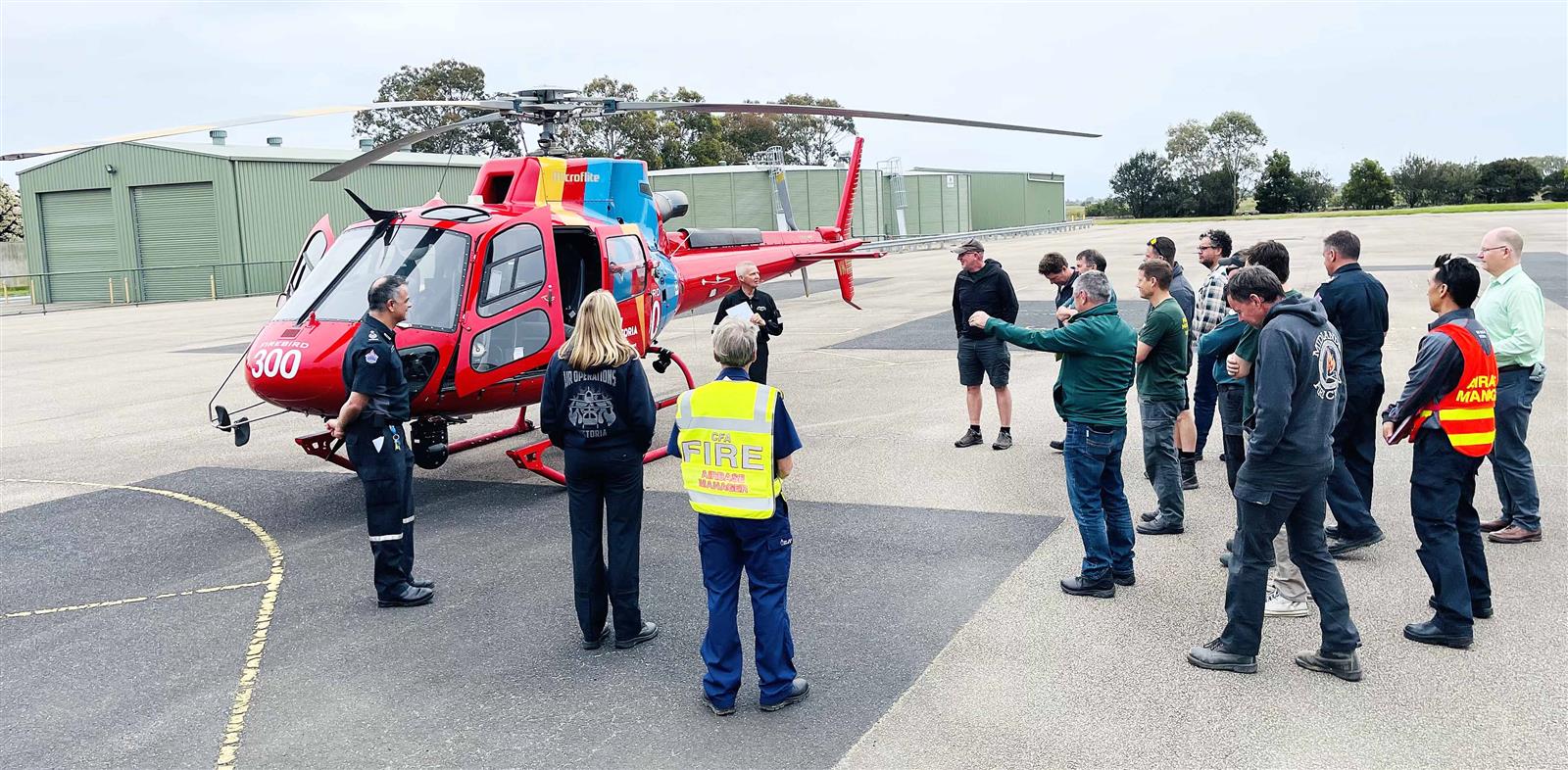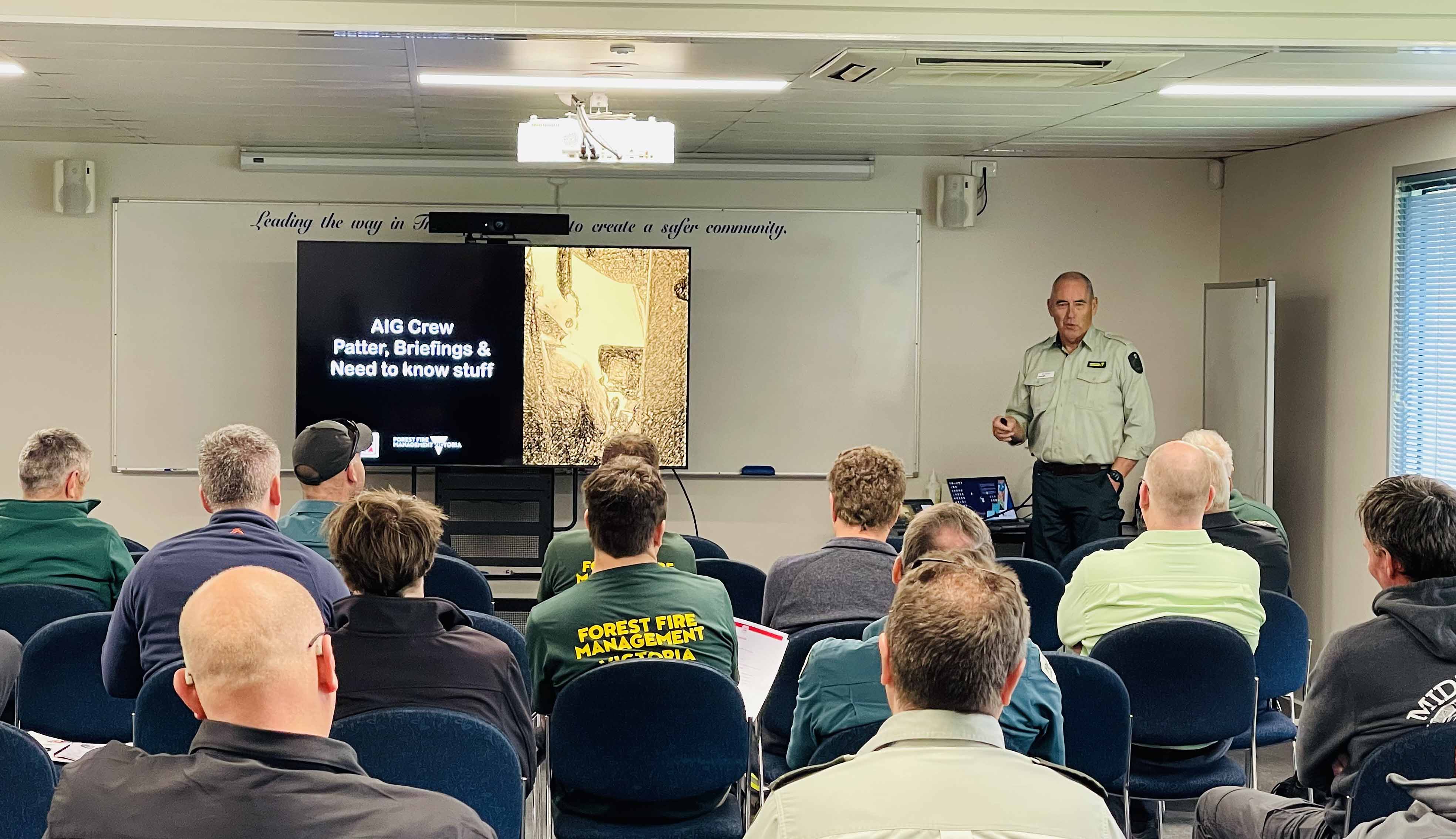
CFA has hosted a multi-agency training course at VEMTC Bangholme to provide Airborne Information Gathering (AIG) operators with the opportunity to confirm their skills prior to the 2023-24 fire season.
Sixteen AIG operators and 14 aviation support personnel from CFA, EMV, FFMVic and FRV attended the training on 21 November, working with the AIG-equipped FireBird 300 helicopter to simulate dispatch procedures, live mapping, video streaming and remote landings.
Subject matter experts from DEECA, EMV, CFA and Microflite Aviation also presented on topics including the expectations of Incident Management Teams (IMTs) and Incident Controllers, aircraft safety, effective camera operation and mapping techniques, and crew resource management, briefings and communication.
This was the first time in several years that an aviation course has been run out of a CFA training ground using real aircraft. It was also the first time the AIG operators had met as a group since the pandemic.
A collaborative partnership between Victorian fire agencies and the aviation sector, AIG uses advanced, military-grade technology to capture information and data associated with fires and other emergencies.

AIG is a critical tool for Victoria’s Incident Management Teams,
enabling them to view live video streaming of developing incidents, fire locations and assets under threat and then use this intelligence to support planning and fireground operations.
AIG data is not just available in Incident Control Centres. CFA firefighters on the ground can access this and other timely information in real time using field tablets, aviation tablets and other mobile devices.
AIG crews are drawn from an inter-agency pool of experienced Air Observers who undertake specialist training, mentoring and assessments prior to being endorsed in the role.
There are about 30 operators from CFA, EMV, FFMV and FRV currently trained in Forward Looking Infrared (FLIR) camera operation and AIG mapping systems.
Each flight includes a crew of three (pilot, camera operator and mapping operator) who are rostered in four-day blocks over the summer period to support crews at fires and other emergencies statewide.
During this year’s fire season, Victoria will have three AIG helicopters available out of Moorabbin and Essendon airports, one of which is capable of night operations.
DCO Operational Response and Capability Garry Cook AFSM said the demand for real-time information from the air had increased in recent years and was vital in supporting incident control, informing warnings and advice and ultimately keeping the Victorian community safe.
“It was great to see the cross-agency representation at the training and to hear from experts on the latest innovations and future thinking in this space,” Garry said.
“Getting eyes on fires early through our aerial and remote detection capabilities is key to implementing the right strategies and tactics during an incident, ensuring the success of planning and operations and above all, minimising the impact on Victorian communities.”